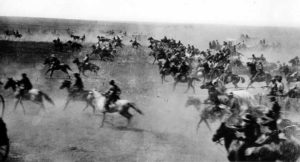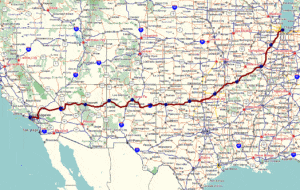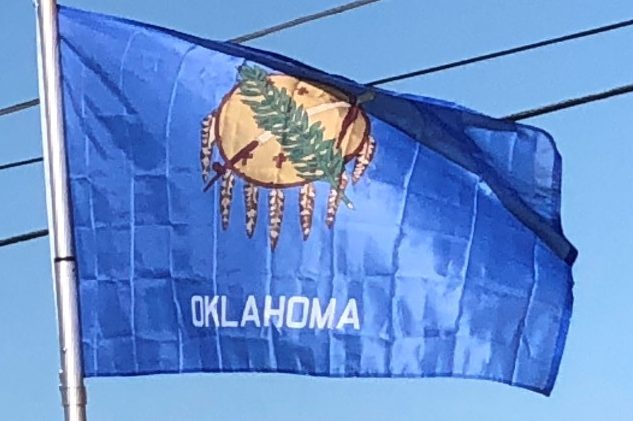All Five Civilized Tribes supported and signed treaties with the Confederate military during the American Civil War. The Cherokee Nation had an internal civil war. Slavery in Indian Territory was not abolished until 1866.
In the period between 1866 and 1899, cattle ranches in Texas strove to meet the demands for food in eastern cities and railroads in Kansas promised to deliver in a timely manner. Cattle trails and cattle ranches developed as cowboys either drove their product north or settled illegally in Indian Territory. In 1881, four of five major cattle trails on the western frontier traveled through Indian Territory.
Increased presence of white settlers in Indian Territory prompted the United States Government to establish the Dawes Act in 1887, which divided the lands of individual tribes into allotments for individual families, encouraging farming and private land ownership among Native Americans but expropriating land to the federal government. In the process, railroad companies took nearly half of Indian-held land within the territory for outside settlers and for purchase.
Major land runs, including the Land Run of 1889, were held for settlers where certain territories were opened to settlement starting at a precise time.

Usually land was open to settlers on a first come first served basis. Those who broke the rules by crossing the border into the territory before the official opening time were said to have been crossing the border sooner, leading to the term sooners, which eventually became the state’s official nickname.
Statehood:
Deliberations to make the territory into a state began near the end of the 19th century, when the Curtis Act continued the allotment of Indian tribal land.
Attempts to create an all-Indian state named Oklahoma and a later attempt to create an all-Indian state named Sequoyah failed but the Sequoyah Statehood Convention of 1905 eventually laid the groundwork for the Oklahoma Statehood Convention, which took place two years later. On November 16, 1907, Oklahoma was established as the 46th state in the Union.
20th and 21st Centuries:
The new state became a focal point for the emerging oil industry, as discoveries of oil pools prompted towns to grow rapidly in population and wealth. Tulsa eventually became known as the “Oil Capital of the World” for most of the 20th century and oil investments fueled much of the state’s early economy. In 1927, Oklahoman businessman Cyrus Avery, known as the “Father of Route 66”, began the campaign to create U.S. Route 66. Using a stretch of highway from Amarillo, Texas to Tulsa, Oklahoma to form the original portion of Highway 66, Avery spearheaded the creation of the U.S. Highway 66 Association to oversee the planning of Route 66, based in his hometown of Tulsa.

Oklahoma also has a rich African American history. Many black towns thrived in the early 20th century because of black settlers moving from neighboring states, especially Kansas. The politician Edward P. McCabe encouraged black settlers to come to what was then Indian Territory. He discussed with President Theodore Roosevelt the possibility of making Oklahoma a majority-black state.
